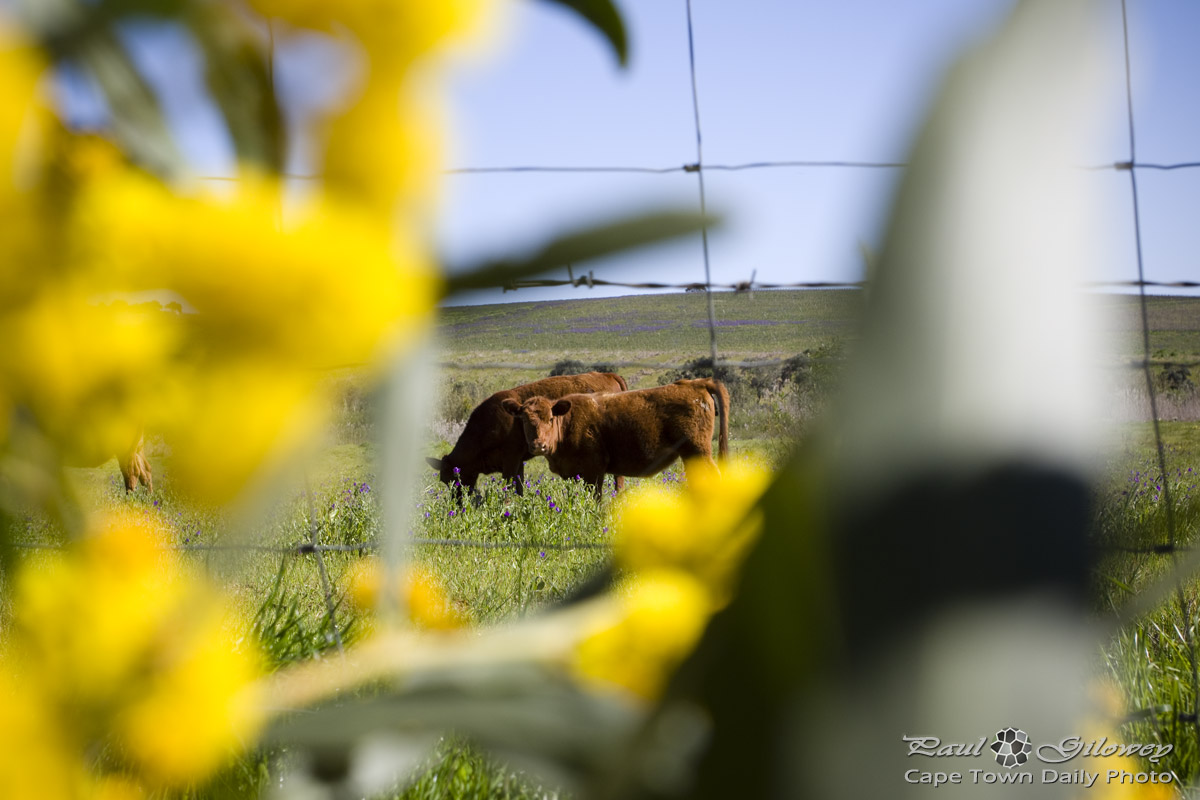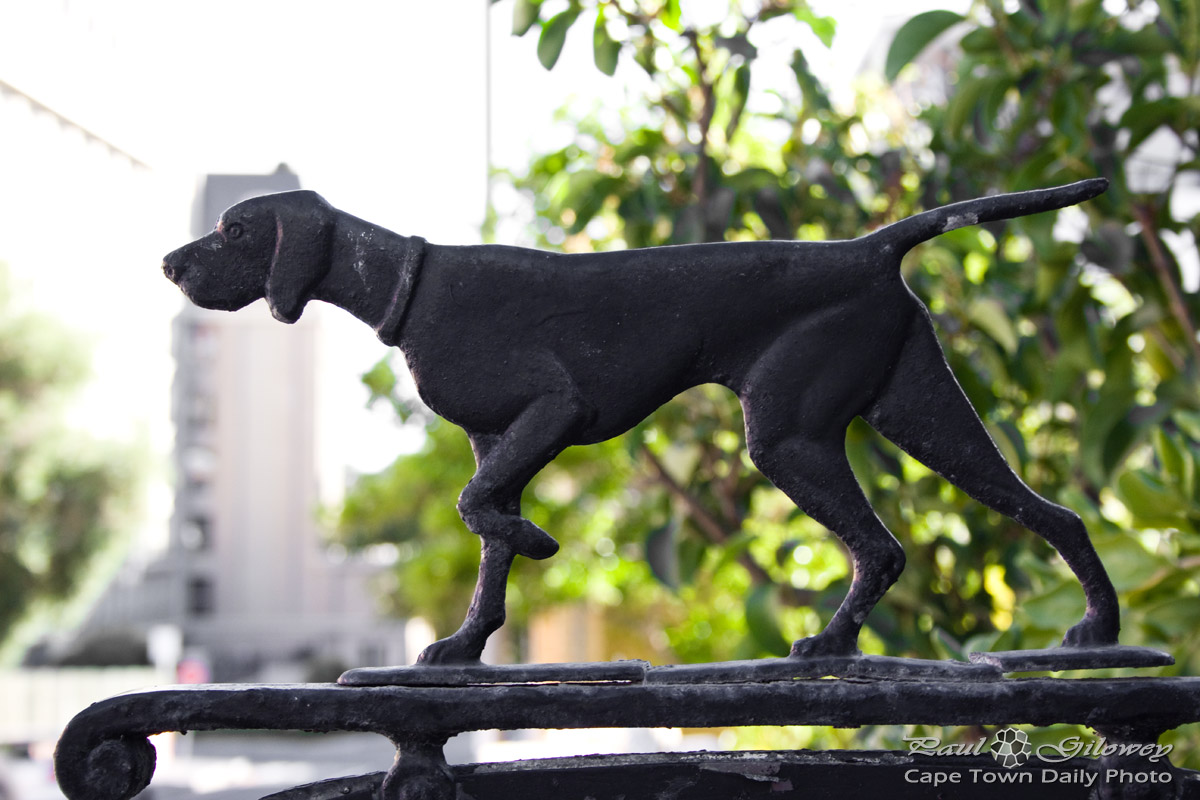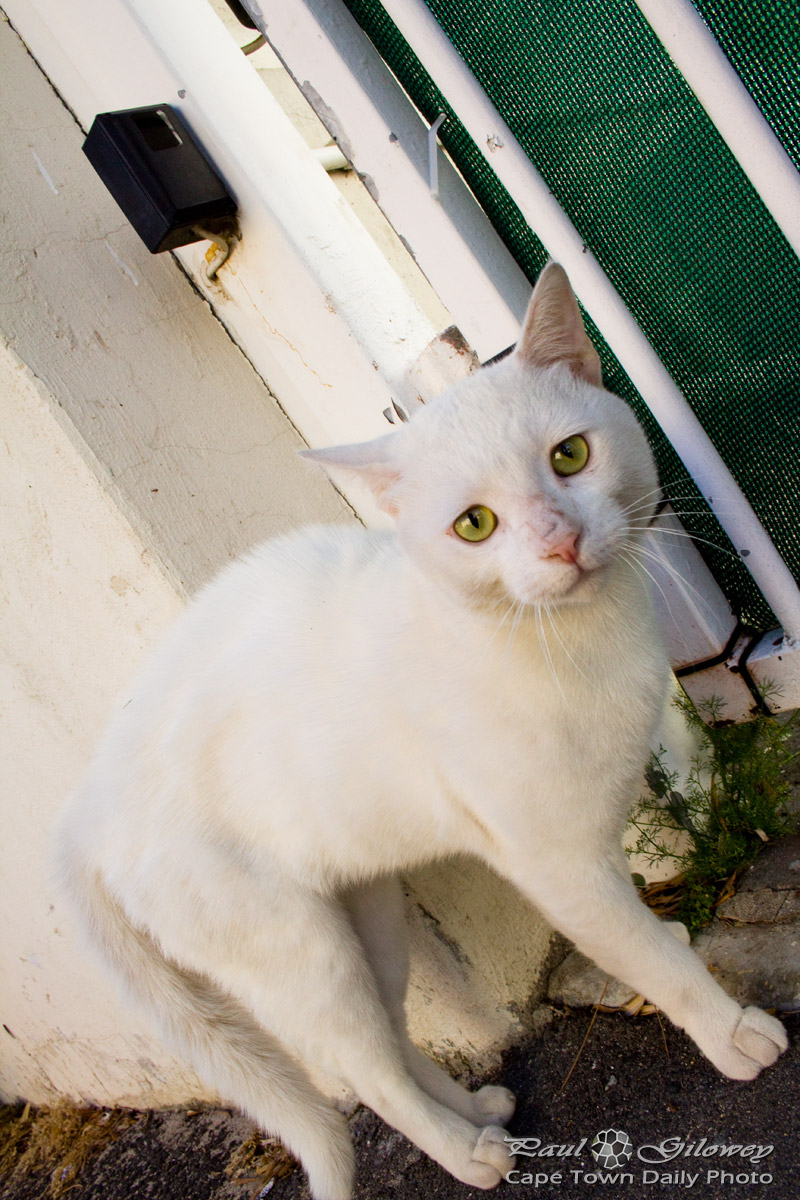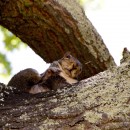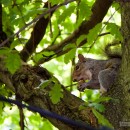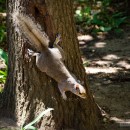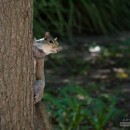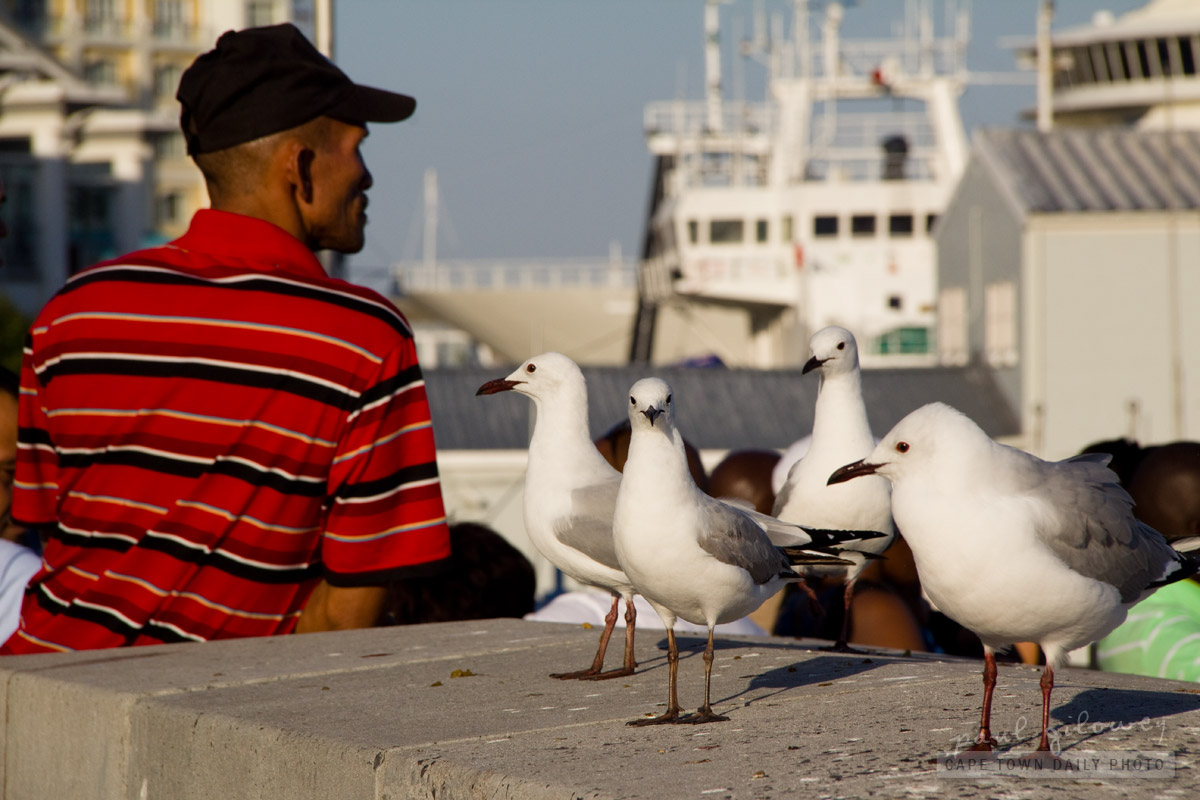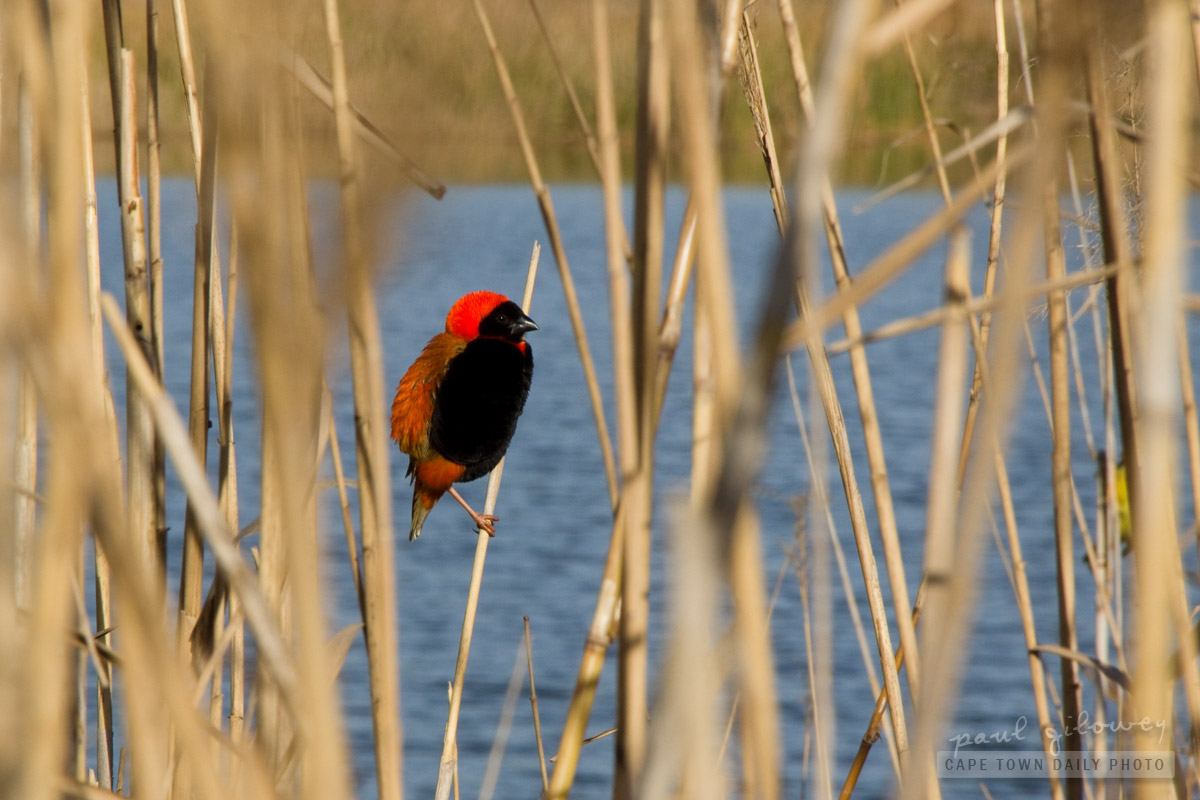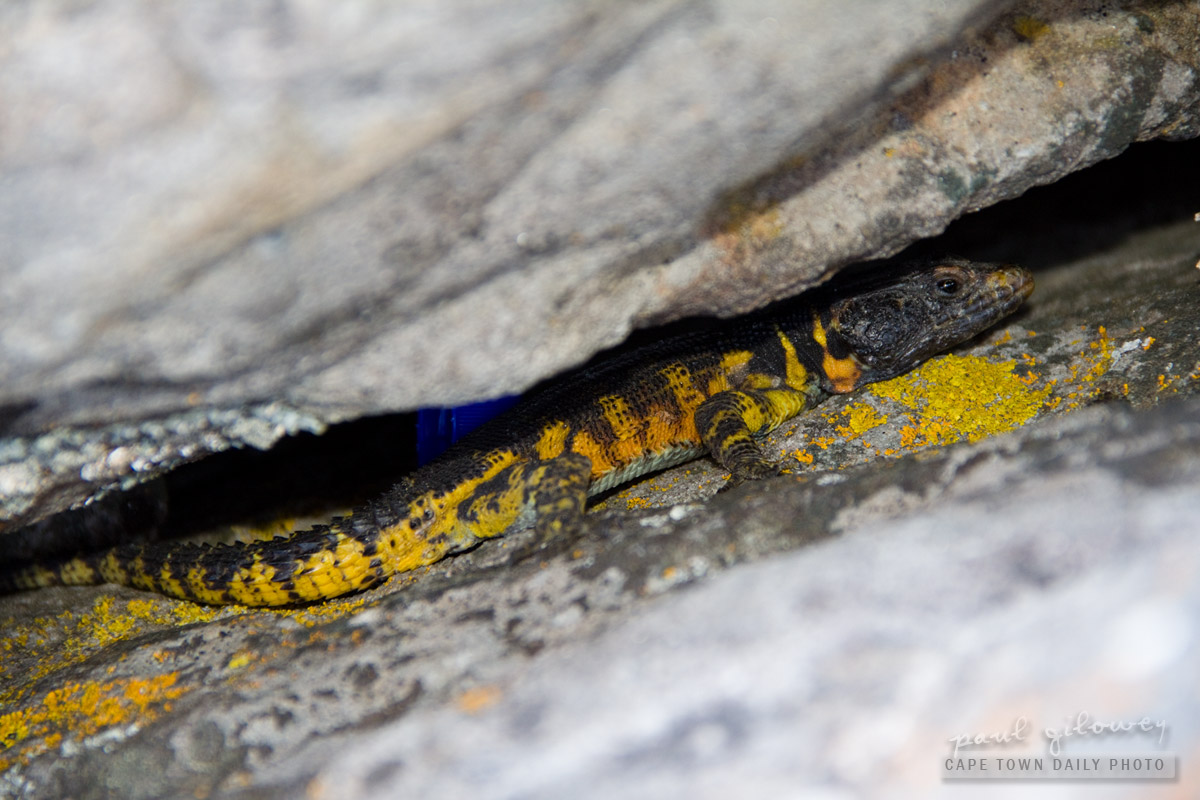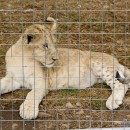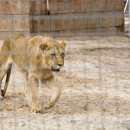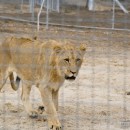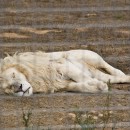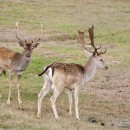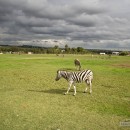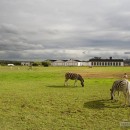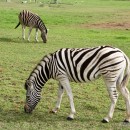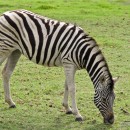Tag Archives: fauna
Furry black bull

And no, I never said "she looks like a cow" to his face - that would have been mean (and, despite the barbed wire fence, I wasn't sure that he couldn't get to me). ;)
An English Pointer
Startled kitty-cat
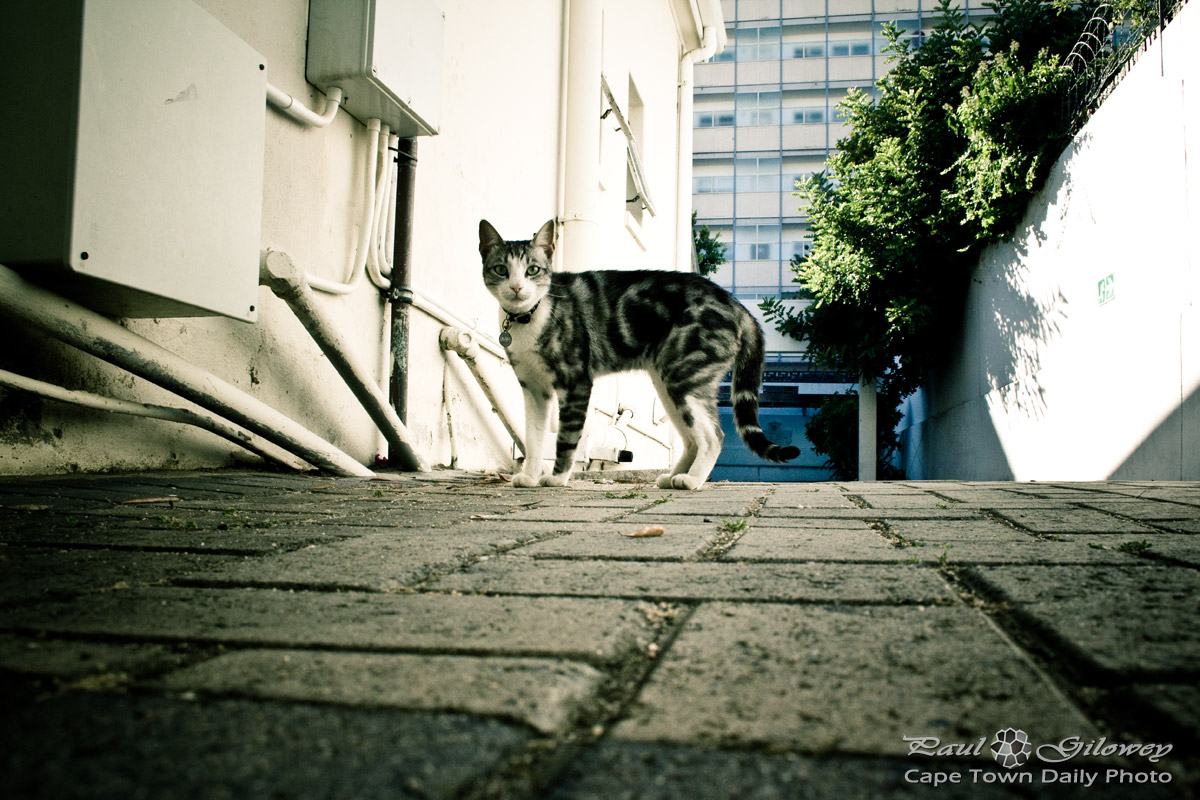
A skinny white cat
A squirrel and the Legion of the Shadow Tails
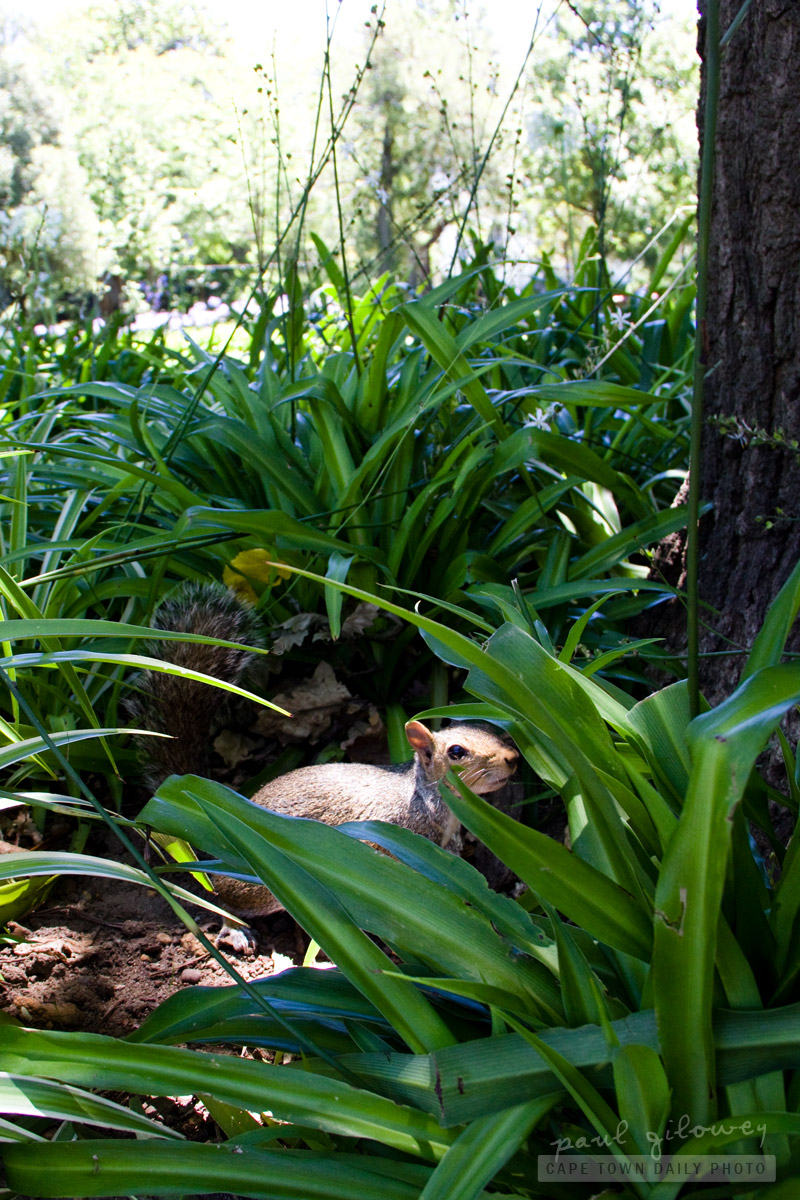
Some would suggest that the Greeks gave them the name "Shadow Tail" because they use their tail to provide shade in summer. Don't believe it though - I overheard from a friend of a friend of a friend that all squirrels are part of a secret society, a club (if you will), that goes by the name Legion of the Shadow Tails.
Yes. You should be worried. You just need to look at the pics below to know that they're up to something.
I swear I hid it here…
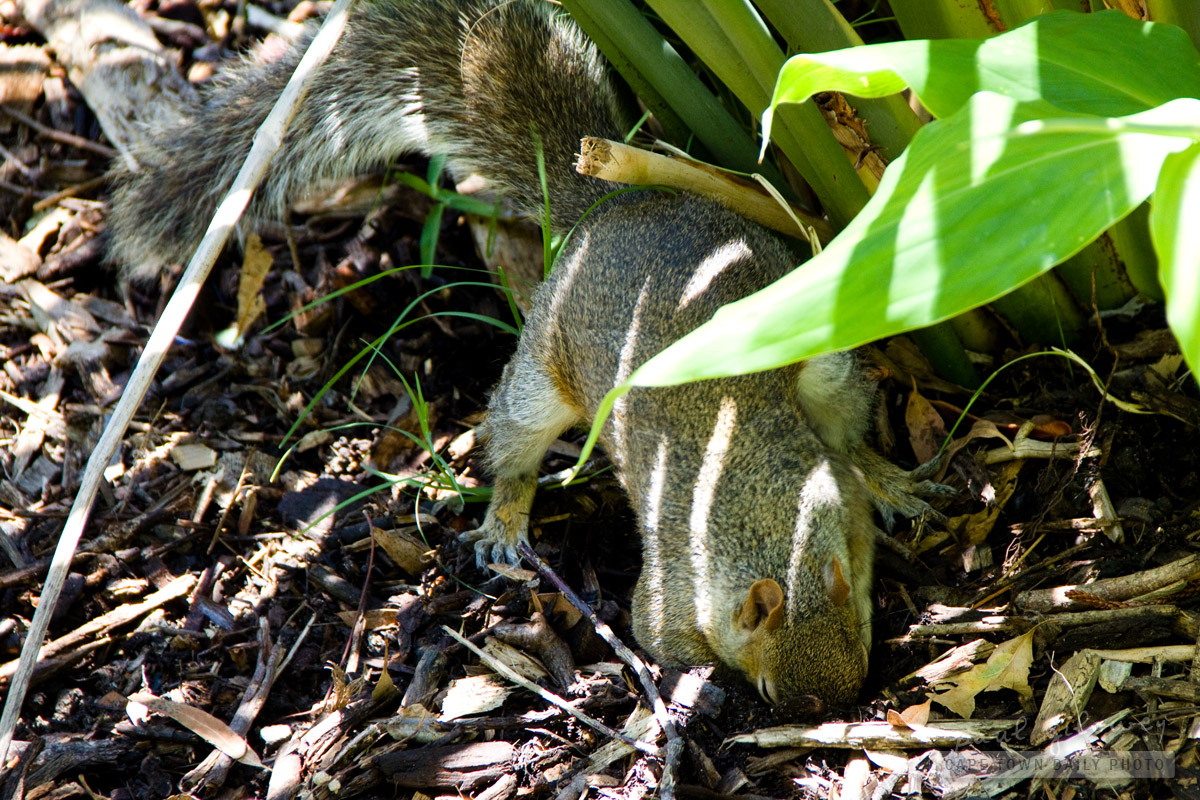
This squirrel spent at least three or four minutes digging (slightly frantically) in the soil. I assume he'd lost his prize nut. I don't think he found it.
Starfish
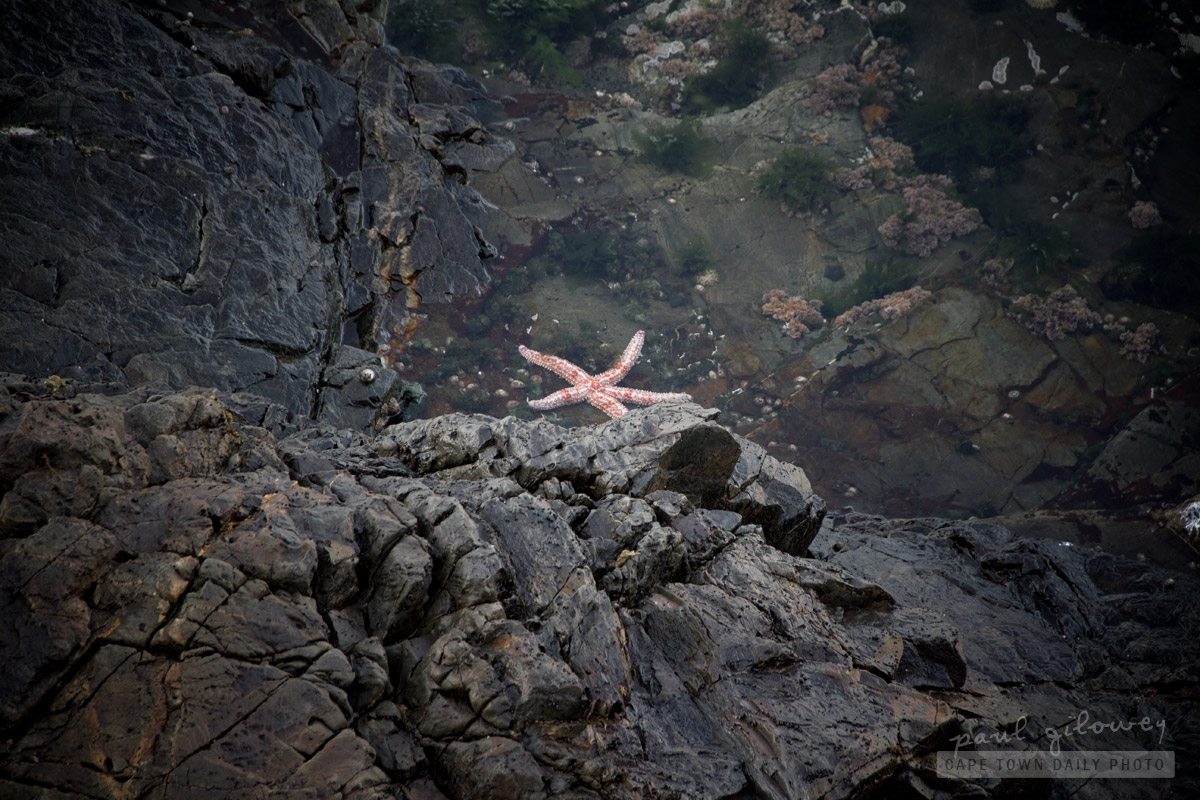
The charity, started by a group of young South Africans in 2001/2002, and is a registered non-profit organisation and as of 2001 are partnered with Global Fund, CIDA, PEPFAR and AUSAID.
Consider supporting Starfish.
Crabs!
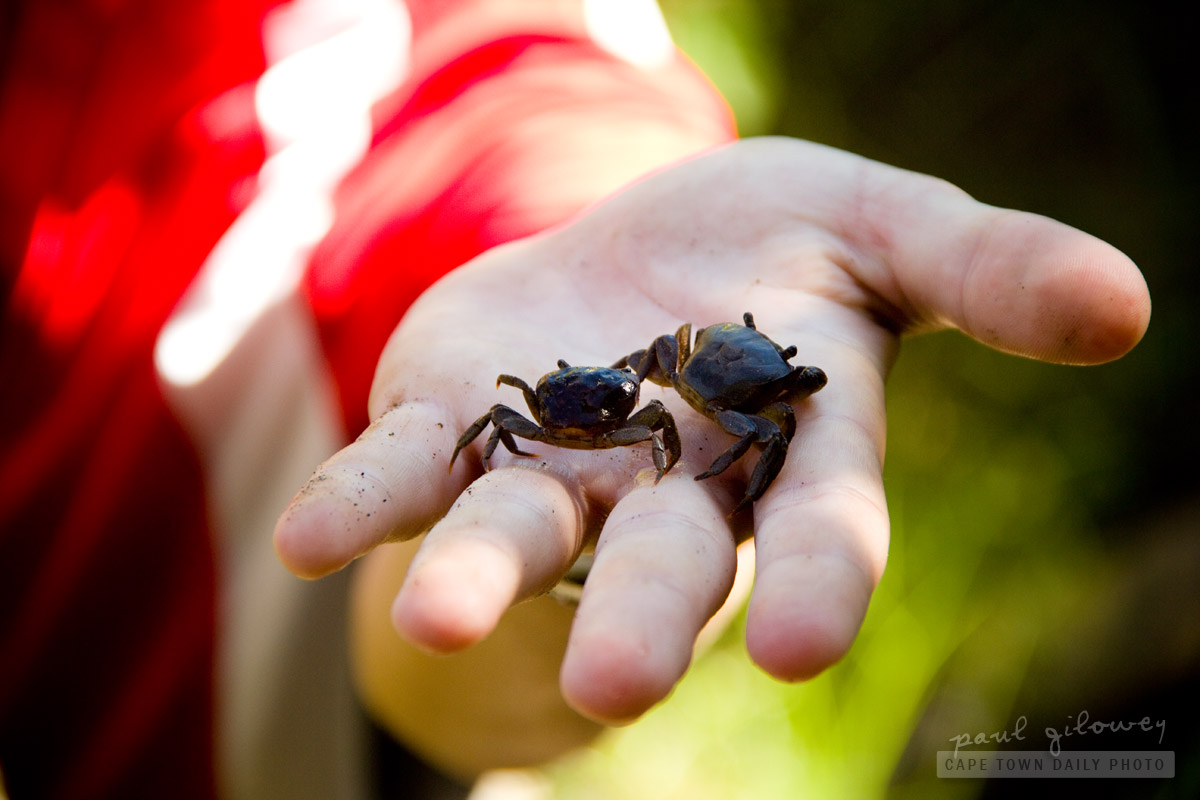
Do you remember catching crabs? Wasn't it fun?
No crabs came to harm during the shooting of this photo. ;)
Swim goslings swim
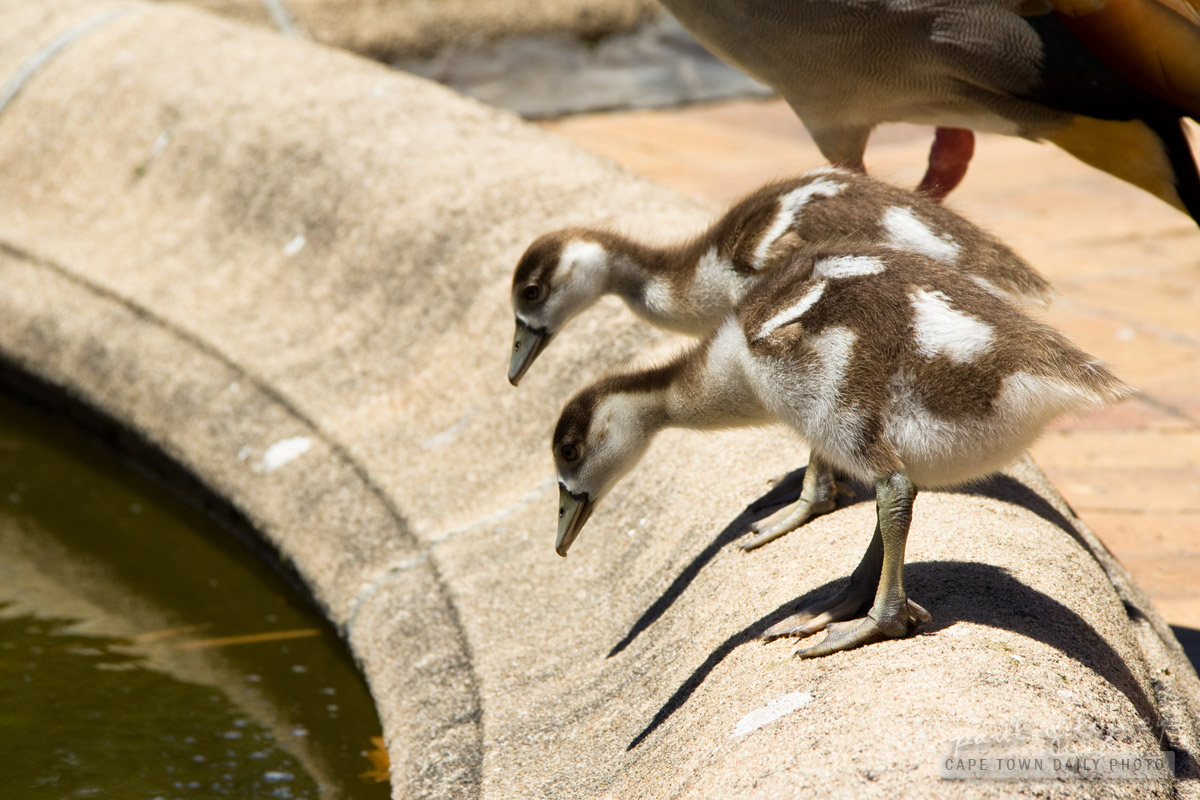
I found these two and their mom in the Company's Gardens in Cape Town. As I've whined before, it's been exceedingly hot in Cape Town this past week, so don't you think it nice of their mother to take them to the gardens for a dip?
Sometimes it’s better to be cold-blooded
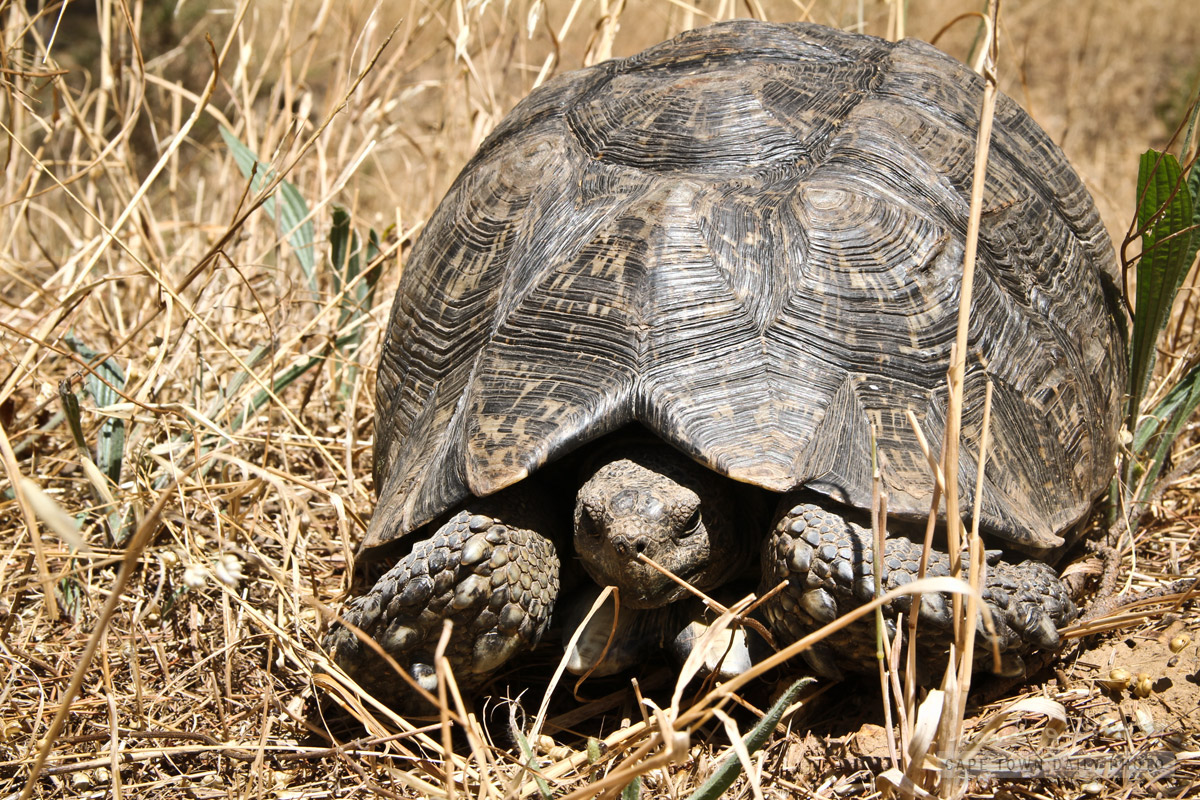
I wonder how this tortoise feels about being out in the sun, and if it's perhaps preferable to be cold-blooded on days like this.
Please don’t feed the seagulls
The clothes maketh not the peacock
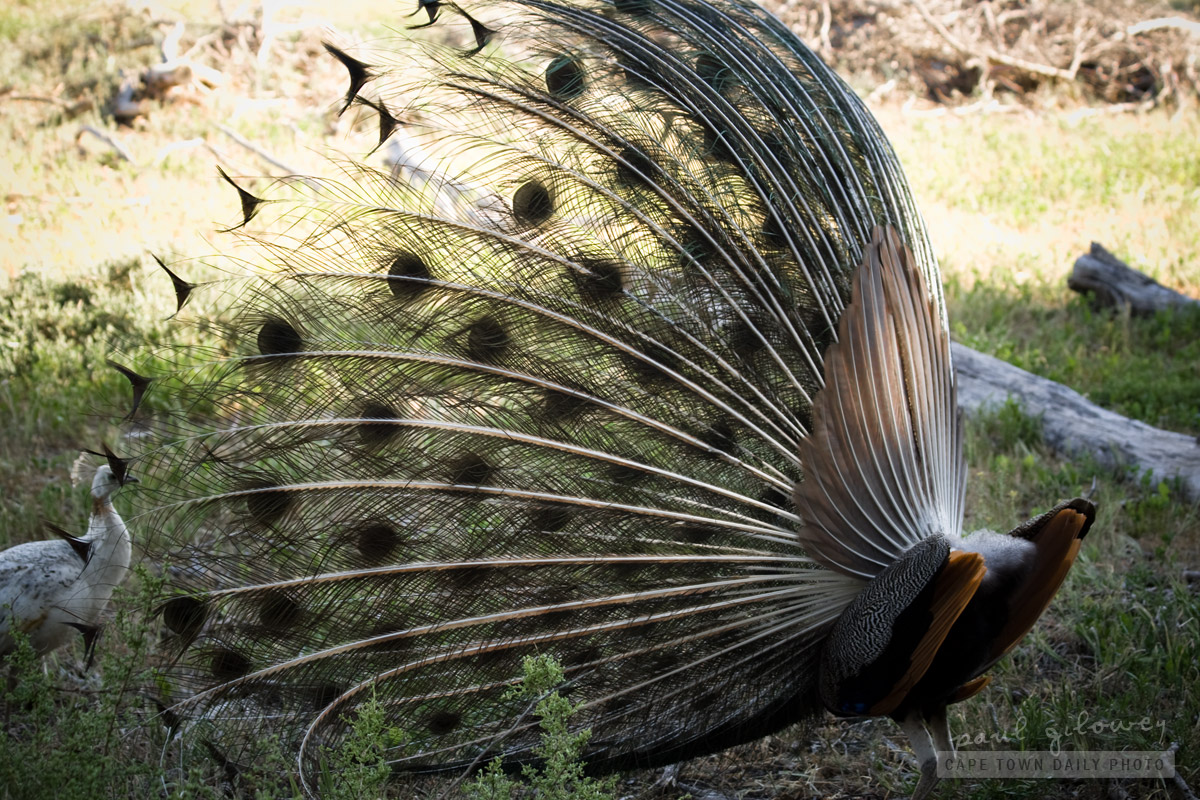
According to the study it's what the peacock says that makes all the difference. I have reason to believe this may too apply to the human race.
Egyptian geese, a pest?
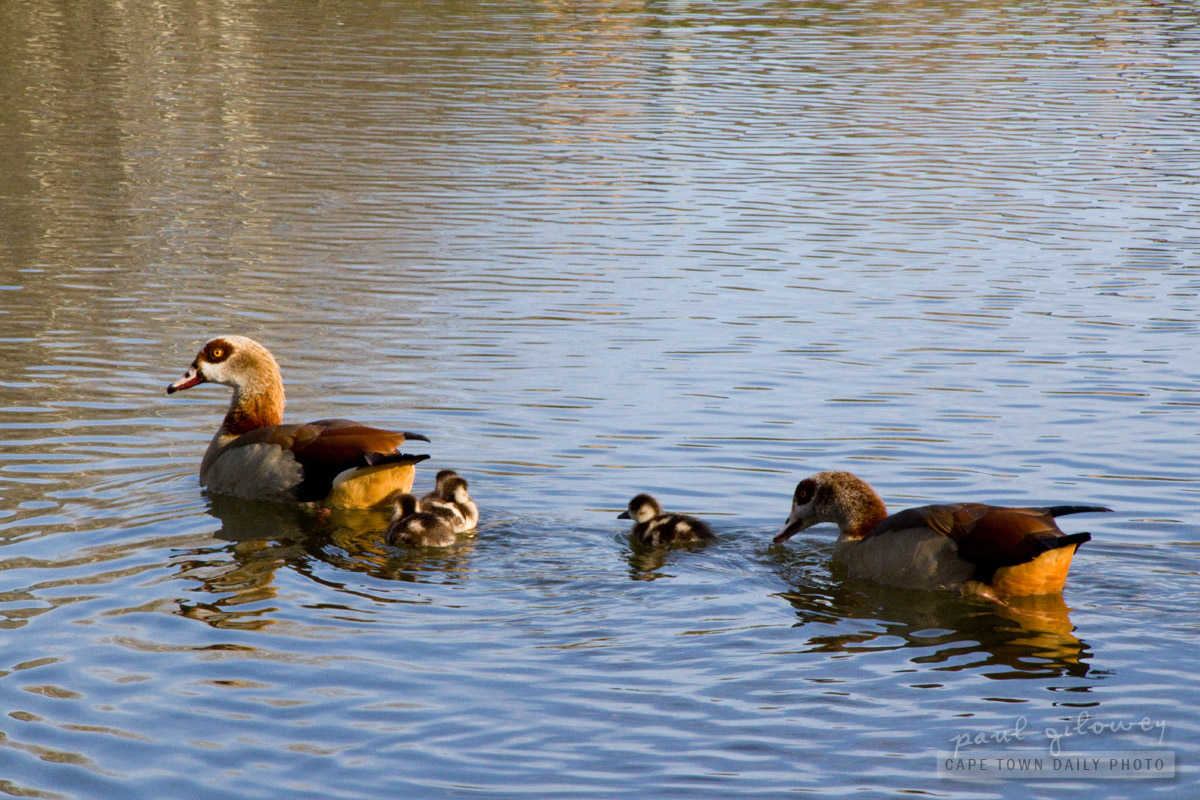
The dams in the Durbanville area (Sonstraal dam and Vygeboom dam) use to be surrounded with green grass and were previously home to families of the ordinary white ducks and geese. Over a period of a few years Egyptian gees started nesting in the area and soon overtook their white neighbours in number and appeared to push them out of the area. I remember watching the birds for some time and observing that the Egyptian gees appeared more hostile whereas the white ducks just looked clumsy and meek.
Today there are hundreds of Egyptian geese in the area and since they typically eat grass, leaves and seeds, it appears as though their sheer number overgrazing has rendered the once-green grassy areas barren and sandy. It's sad really - those two dams specifically use to be such beautiful places.
Bamboo Bird?
A penny for your thoughts
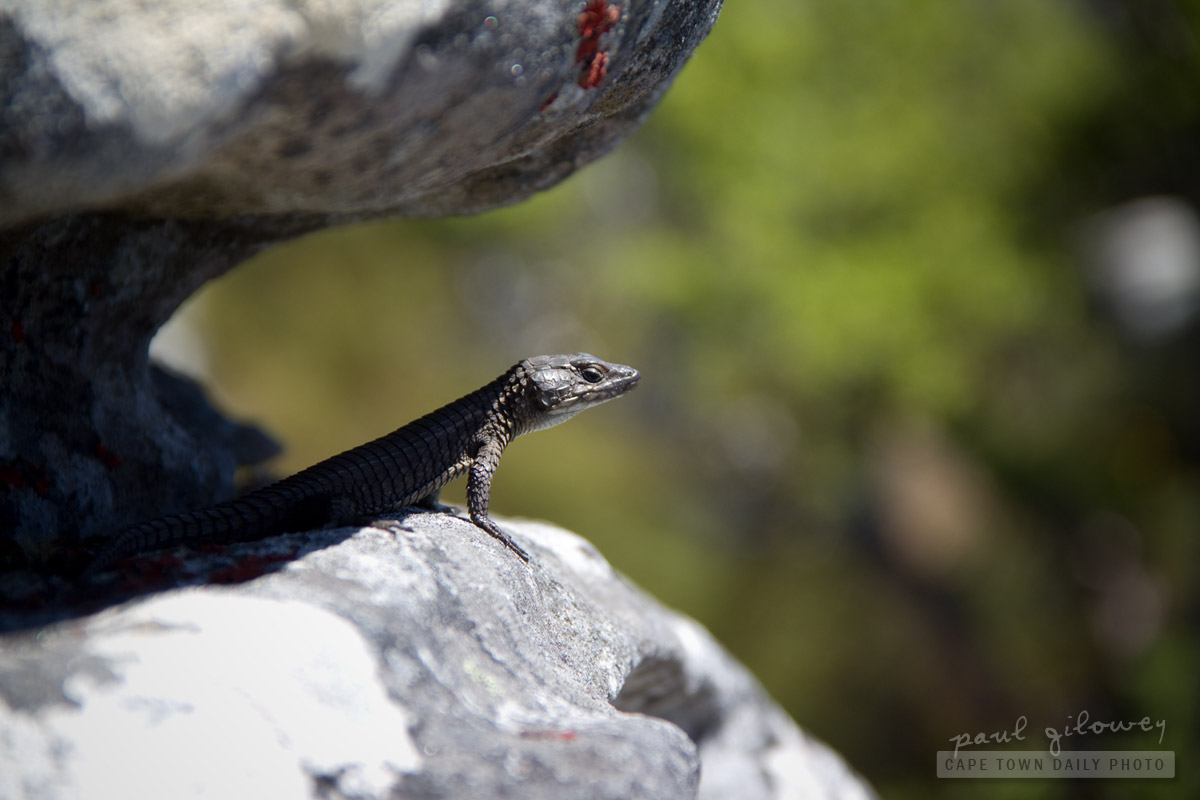
Imagine living a life in which you were constantly either trying to find food or dodging predators.
A lizard in camo
Yellow weaver bird
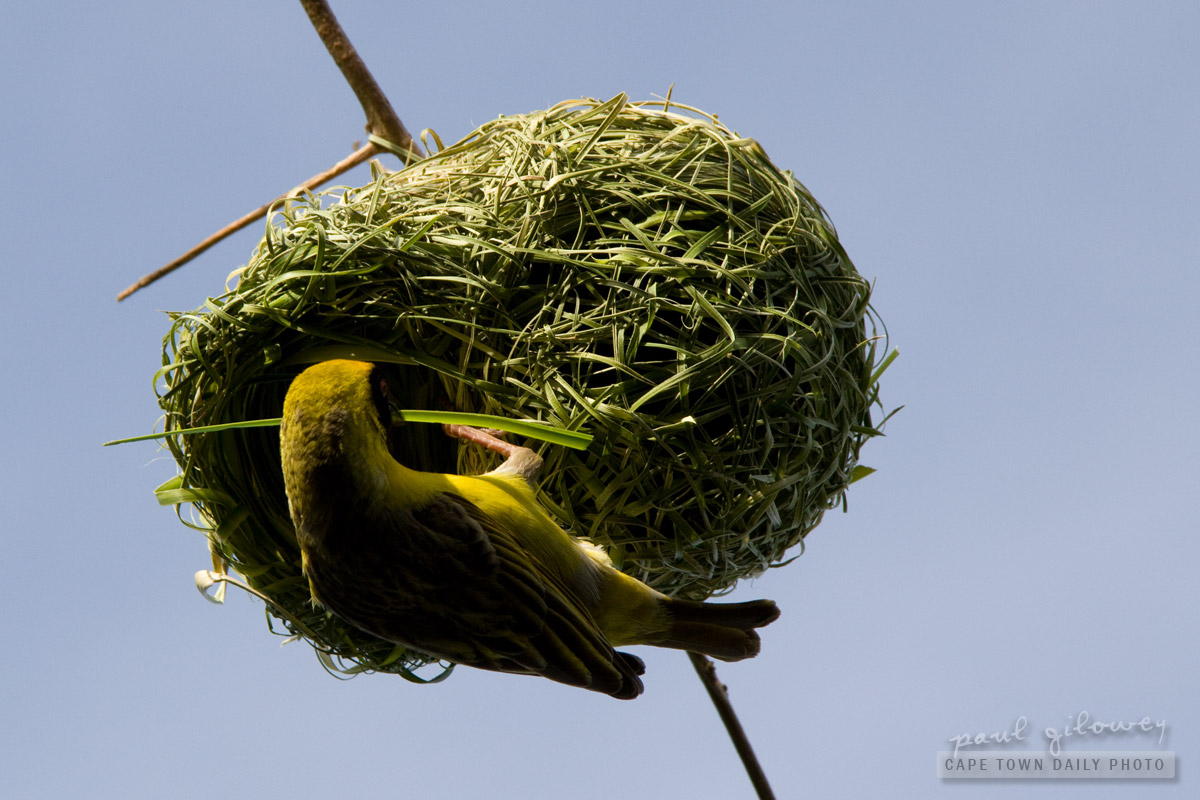
I've watched this weaver build its nest over the past few days and, perhaps it's premature to say so, but I think it looks a little more secure than the previous one. That said, I sure hope that the little piece of grass that you can see wrapping over the thorn above the nest isn't the only thing keeping it in place!
Swimming flags and seagulls
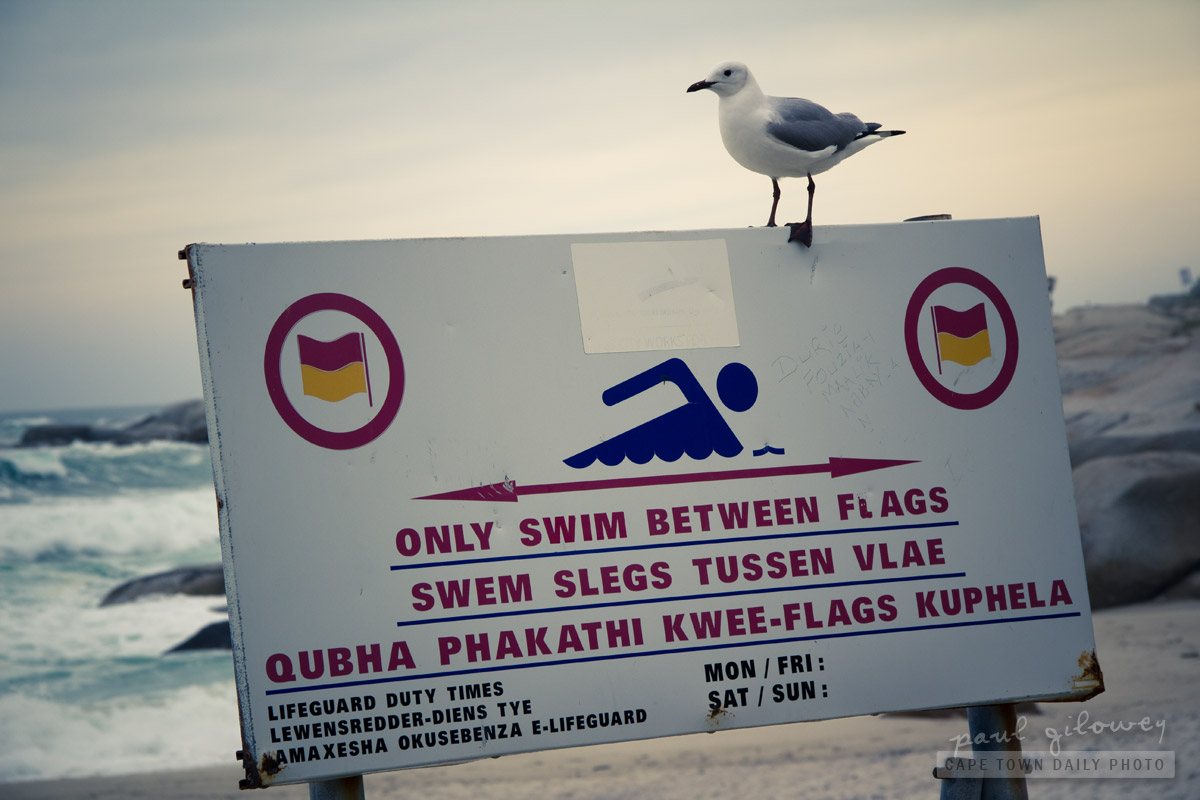
So, when visiting beaches like Camps Bay, keep an eye out for the marker flags, and try staying between them. And remember, if you're looking for a hot date with a hot, well-built lifeguard - swimming outside of the markers isn't the way to get one. That stuff only works in the movies. ;)
Squirrel-tree
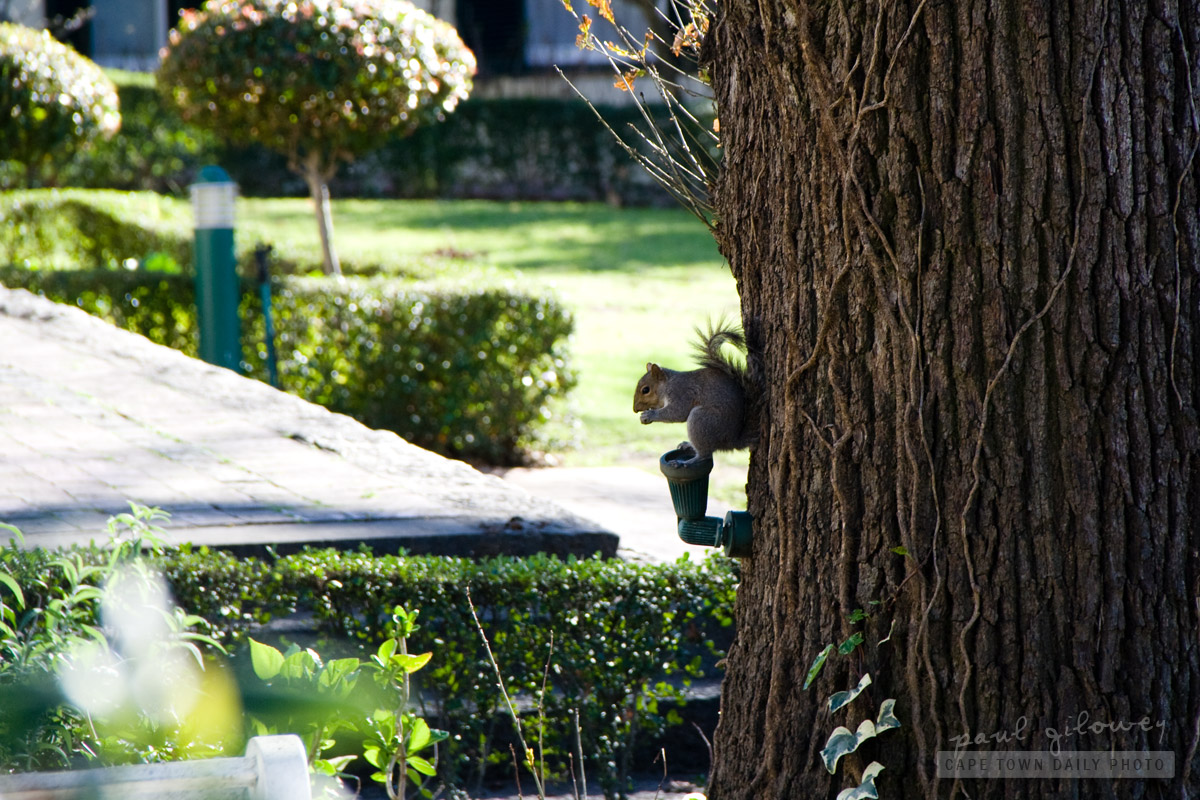
A cow called Charpentier Magot

The tag on this one's ear reads Magot, and while Kerry-Anne thought that the label may be a reference to the cow's owner's name, in fact, from what I can tell the Charpentier Magot is a breed of cow (and given the name) possibly originates from France.
If you have any interesting facts about the Charpentier Magot, please do leave a comment on this post. There really appears to be very little about the breed on the Web!
The curious cows of Fair Cape

I took a little drive out the back of Durbanville, along the Malanshoogte road that passes by the Fair Cape dairy, on the Kuiperskraal farm (map).
The small herd of cows in this photo were lying next to a little dam, peacefully swatting the odd fly with their respective tails. At first they were afraid, they were petrified, (they seemed to be) thinking "who's this strange tall beast standing by our side?" *. But, then curiosity set in and the young animals (feeling safe with superior numbers) slowly mustered into a semi-circle of curiosity.
Aren't cows cool?
Squirrel power – defending the nut
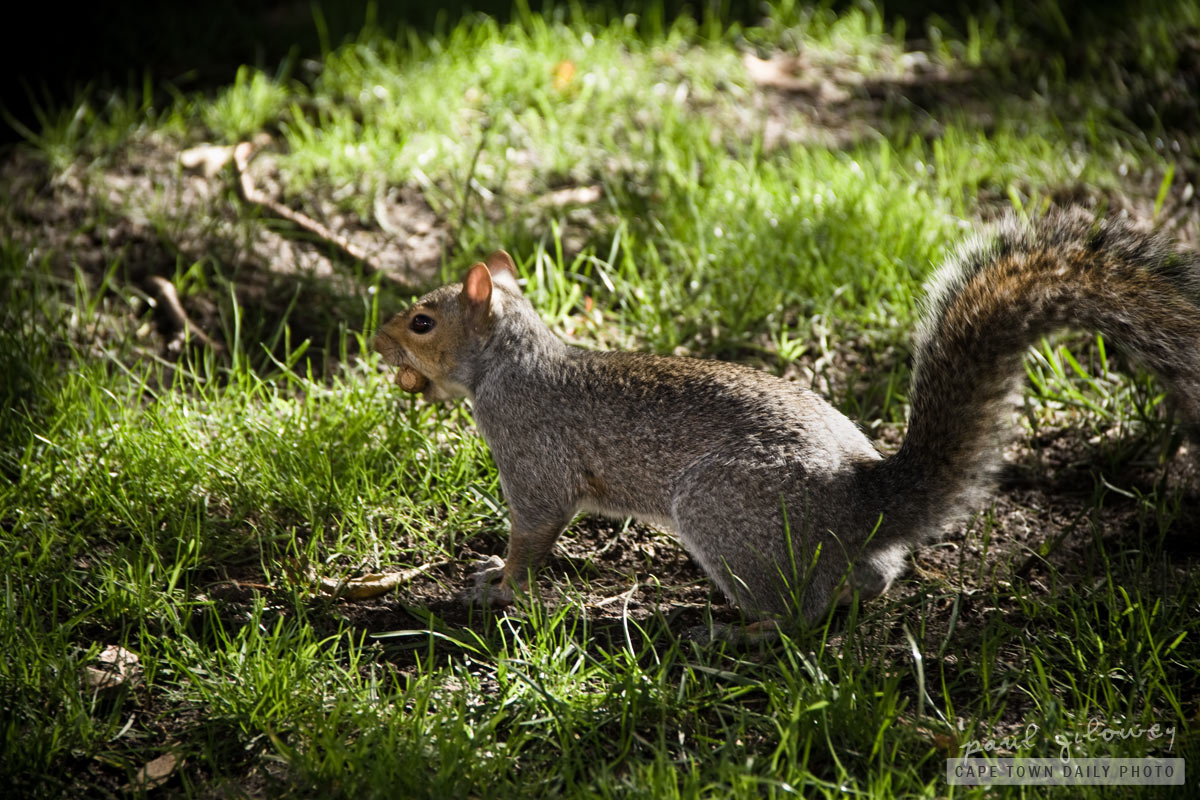
Squirrels, your probably know, hide their nuts in a stash. What you may not be aware of is that since certain acorns contain high levels of bitter tannins, squirrels may at times let the acorns rest for a long while in a place that allows water to filter them, slowly removing the nasty-tasting tannins. Isn't that clever!?
White Lions – a tragedy
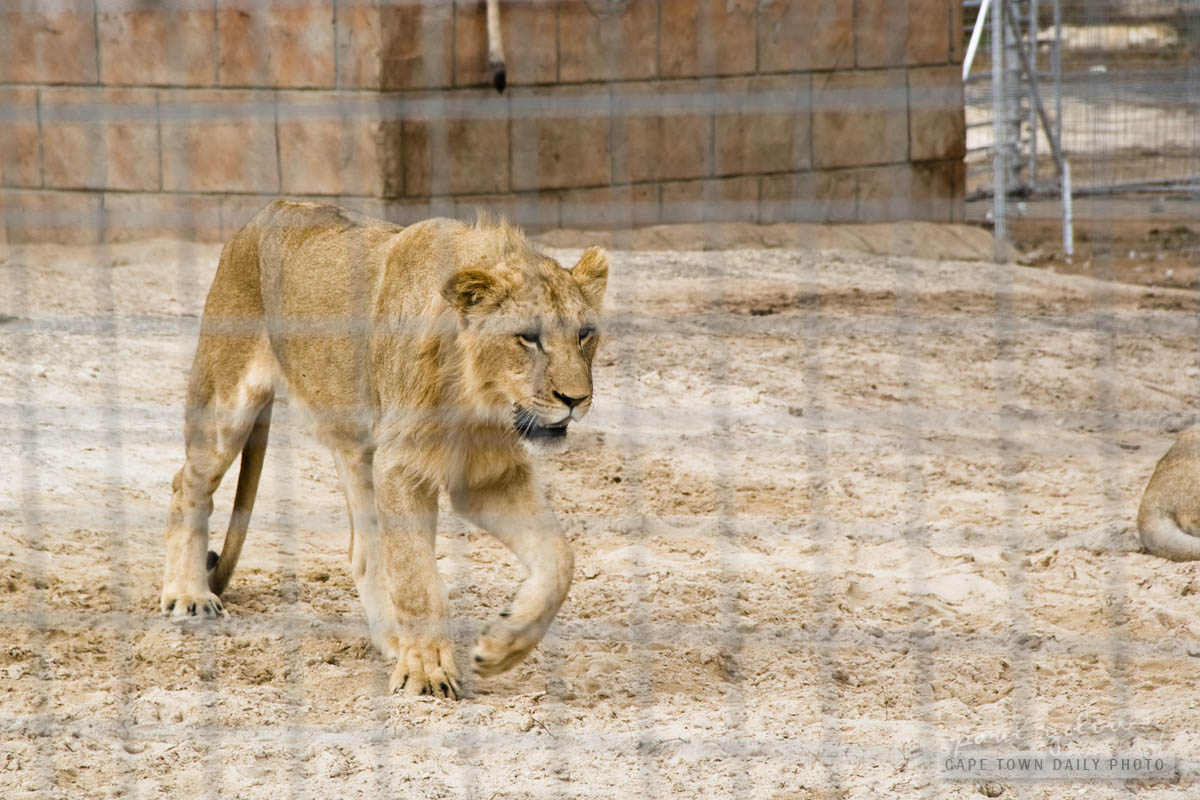
We paid our R70 entrance fee and walked the short distance to the enclosures to see the lions. Our visit lasted about 30 minutes, and the above aside, I can't say that it was worth the entrance fee - and can safely say that we won't feel the need to visit again.
Just to clarify, I fully support rehabilitation and conservation projects - even those that preserve animals who could never be reintroduced into the wild. However, I found no information on Cape Town Lion Park's website, besides for a reference to "education" to indicate that they were involved in conservation.
- Female White Lion
Fallow Deer
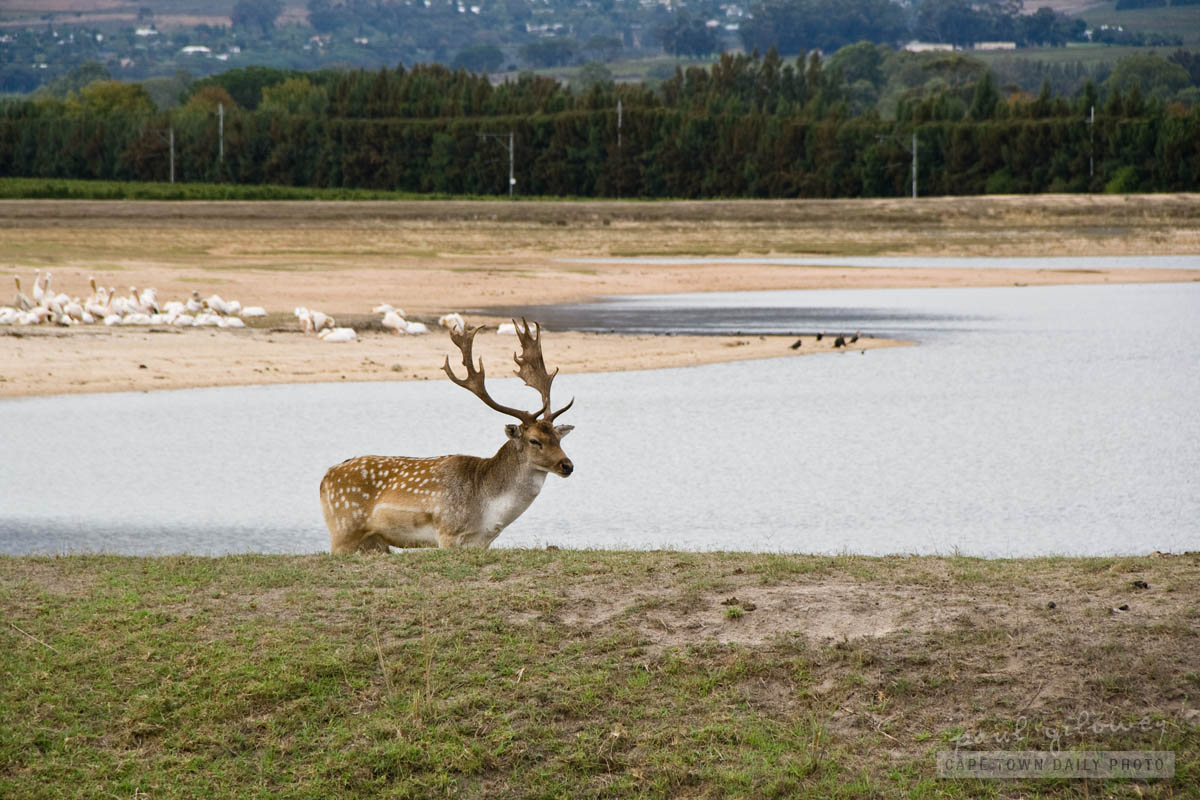
We found this dominant male buck and his small harem :) of Fallow Deer alongside the R310, heading out of Stellenbosch to the Spier estate. I use the word "harem" in jest, but in reality the reference is pretty much spot on as there's one dominant male buck that has fought for the right to mate with the females on the herd.
Although we spotted at least two males in the herd, the chance is great that only one of them will mate with the females. I believe it's a way of ensuring that the strongest survive and reproduce.
Do you know much about Fallow Deer, and exactly how one buck fights for dominance, and what happens when that male get's too old and is replaced by a younger, stronger, buck? Please leave a comment on this post!
Scary brown cows

As I approached the small herd, the big cow, and her wingman (wingwoman?) to the right of the photo, turned to stare me down. They sure do look mean, don't they? I was suddenly awfully glad that I was standing on the opposite side of the fence.
Largest antelope in Africa

Male elands can grow to a mass of about 900kg whereas females generally don't exceed 600kg (probably because they watch what they eat and go to gym more often). What I find amazing about the eland is that even though they weigh so much, from a standing position they're able to jump about 2.5 meters into the air! I guess that shows how muscular those legs and thighs are!
Even though the Wikipedia article mentions that some South African farmers have switched from cattle to eland (due to eland being more hardy) I can't say that I've ever seen eland meat in the butchery or on a restaurant menu. Have you?
An ostrich family
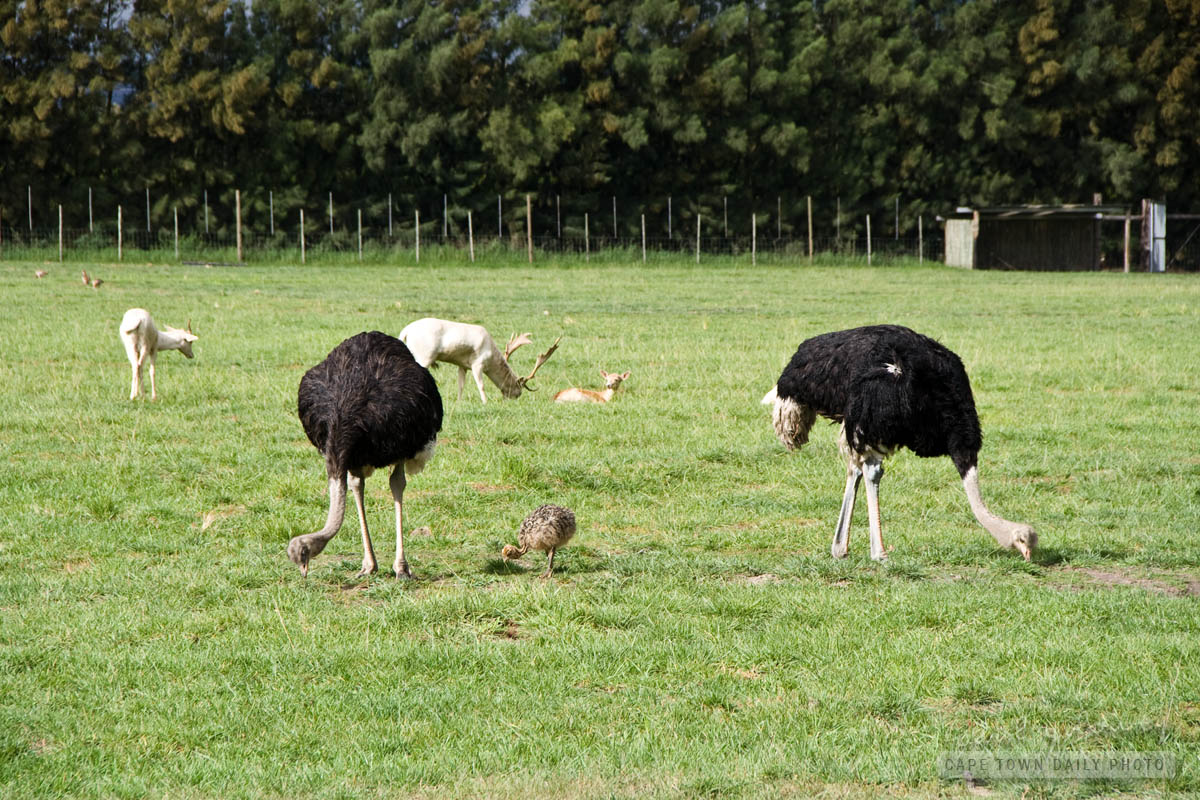
Click on the photo to see the large version - isn't the baby ostrich cute? :)
Ostriches are native to Africa and are (as I guess many of you will know) the largest bird in the world. At a hefty mass of around 120kg, and with proportionally tiny wings, it's no wonder that ostriches don't fly. What I found surprising however was that a bird of that mass is able to run at approximately 70kph! Not bad going hey!?
If you do visit South Africa, you may come across ostrich fillet steak on our restaurant menus, or in our supermarkets. The meat looks a lot like beef steak; only darker in colour and with no visible fat. In fact, it's an extremely healthy alternative to beef steak since it tastes a lot like beef but contains very little fat or cholesterol.
Zebras and zonkeys

Click on the images below to see more zebra pics.
- Zebras
- Zebras
- Zebras
- Zebra
Seagulls scheming
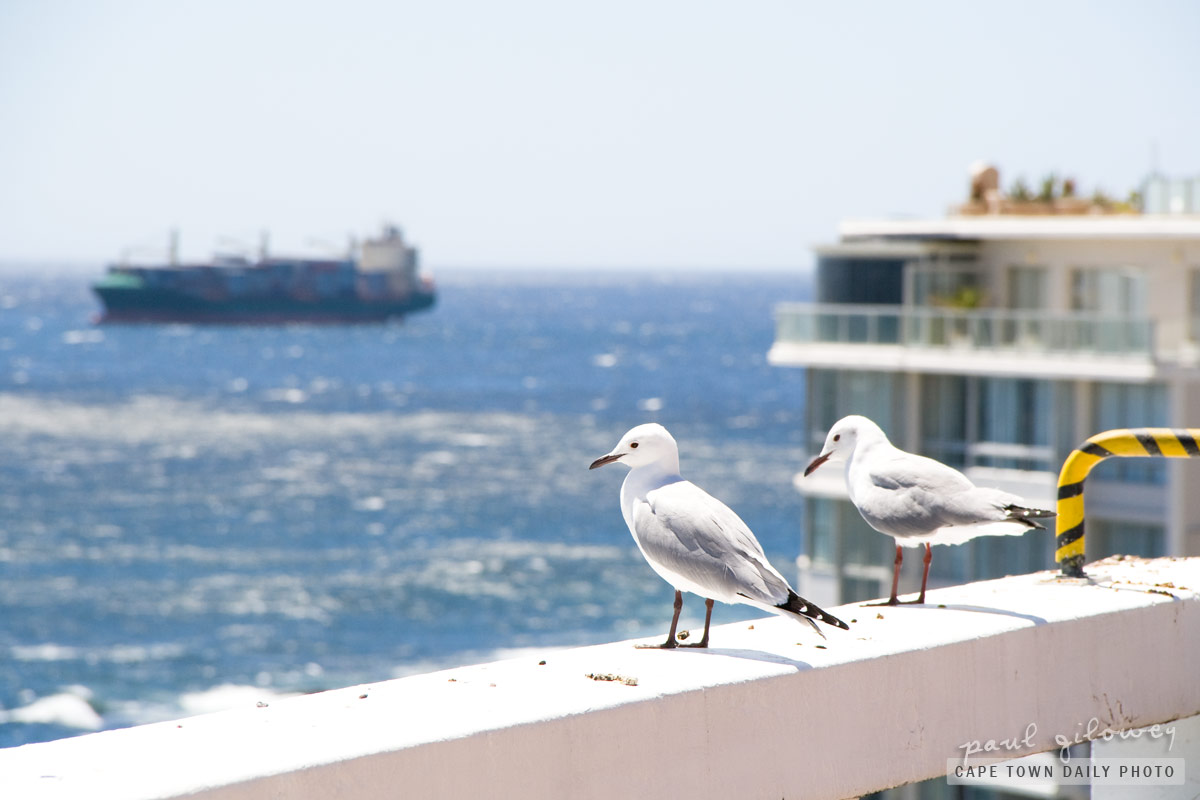
On the more serious side, did you know that seagulls can live for 20 or more years? The same seagull has most probably been attacking your seaside picnics for 20 years! No wonder there are so many of them around!
